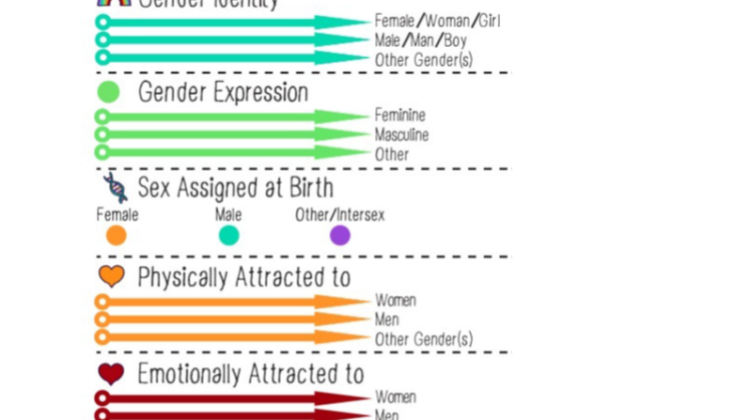
The California State Board of Education is considering adopting mandatory student instruction in a radical sex and gender curriculum, under the guise of health education, which promotes transgenderism to students in elementary through high schools and encourages students to explore possible gender options (which, according to one source used in the curriculum, number at least 15).
These curriculum changes are being proposed through a [revision](https://www.cde.ca.gov/ci/he/cf/documents/hefwch3tk-3.docx) of the “Health Education Framework for California Public Schools” which is being conducted by the California Department of Education (CDE), the Instructional Quality Commission (IQC), and the State Board of Education (SBE). The Health Education Framework is concerned with educating students on a number of actual health concerns including nutrition, exercise, dental health, and traffic safety, but also aims to teach students as young as four years old about gender identity, homosexuality, transgenderism, and other related topics.
The [Revised Draft Health Education Framework](https://www.cde.ca.gov/ci/he/cf/documents/hefwch3tk-3.docx) is now available for public comment and a look at its contents reveals a radical leftist approach to the subject of human sexuality and a concerted effort to teach children as young as four and five years old that sexual identity is not fixed at birth but is in fact mutable.
For instance, in the [section on teaching kindergarteners](https://www.cde.ca.gov/ci/he/cf/documents/hefwch3tk-3.docx) the curriculum advises:
“Gender socialization begins before children start school—students may believe that different norms are associated with people of particular genders by the time they enter kindergarten. While this understanding may be limited, students can still begin to challenge gender stereotypes in a way that is age appropriate. While students may not fully understand the concepts of gender expression and identity, some children in kindergarten and even younger have identified as transgender or understand they have a gender identity that is different from their sex assigned at birth… *My Princess Boy* by Cheryl Kilodavis is an age-appropriate book that can be used to demonstrate gender differences and inclusion.”
The book mentioned, *[My Princess Boy](https://www.amazon.com/My-Princess-Boy-Cheryl-Kilodavis/dp/1442429887)*, describes a young boy who chooses to dress up in girl clothes and is accepted and loved regardless: “My Princess Boy loves his dad. His dad tells My Princess Boy how pretty he looks in a dress. His dad holds his hand and tells him to twirl.”
Another recommended book, *[Who Are You: The Kid’s Guide to Gender Identity](https://www.amazon.com/Who-Are-You-Gender-Identity/dp/1785927280)* teaches that there are at least 15 possible genders including “boy, girl, both, neither, trans, genderqueer, non-binary, gender fluid, transgender, gender neutral, agender, neutrois, bigender, third gender, two spirit…” and that it is impossible for anyone to determine the gender of a baby at birth.
The proposed curriculum only gets more extreme in the upper grades. In the section devoted to teaching seventh and eighth graders, the guidelines state:
“To be inclusive of all students in terms of gender identity and sexual attraction, health education teachers and other educators must be mindful of personal biases and use gender neutral language when discussing peer and romantic relationships. It is important not to assume a student’s identified gender pronoun based on sex assigned at birth or appearance. Some students may identify with the traditional masculine/feminine pronouns ‘he/she,’ ‘him/her,’ and ‘his/hers,’ while some may prefer pronouns such as ‘they,’ ‘them,’ and ‘theirs’ as a singular pronoun… In addition, the term ‘partner’ should be used in place of or in addition to ‘boyfriend/girlfriend’ or ‘husband/wife’ to avoid assumptions about gender and sexual orientation. Some students may be non-monogamous and the term ‘partner(s)’ may also be used to be more inclusive.”
The guidelines for high school students similarly mandate the teaching of gender as a spectrum, not a binary fact:
“There are an infinite number of ways an individual may identify or choose to express their individuality and sense of self, including gender. Students may not conform to the social norms of binary gender identities of male and female (e.g., gender non-binary, gender nonconforming, androgynous, genderqueer, gender fluid), and it is important to be as sensitive and responsive to students’ needs as possible. Be mindful of students’ identified gender pronouns and be aware not to make assumptions based on appearance.”
Perhaps most disturbingly of all, parents of students in California public schools will not be notified about the content of the curriculum and are denied the ability to have their children opt out of these lessons in radical gender theory.
Brenda Lebsack, a longtime public educator and member of the Orange Unified School District, who writes for [EdSource.org](https://edsource.org/2018/parents-educators-should-scrutinize-concepts-of-gender-and-sexual-identity-in-states-health-education-framework/606025), was the first to focus public attention on the new curriculum.
She [explains](https://edsource.org/2018/parents-educators-should-scrutinize-concepts-of-gender-and-sexual-identity-in-states-health-education-framework/606025):
“While parents may assume they can opt out of this instruction, as they can with sexual health education and HIV prevention, this simply is not true. Instruction about gender or sexual orientations that is implemented through the adoption of the framework is exempted from parent notification and opt out requirements ([California Education Code 51932b](http://leginfo.legislature.ca.gov/faces/codes_displaySection.xhtml?lawCode=EDC§ionNum=51932)). According to [The California Safe School Coalition](http://www.casafeschools.org/OptOutQA.pdf), state law provides that ‘instruction or materials that discuss gender, sexual orientation, or family life and do not discuss human reproductive organs and their functions’ are not subject to parental notice and opt-out laws.”
She adds, “Because the California Department of Education is inviting public comment on the draft, I urge all California residents to review the framework and provide input.”
The California State Board of Education (SBE) will make the final decision on whether to adopt this curriculum in May 2019.

